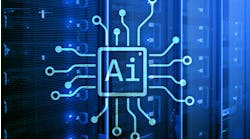ServiceNow Industry Perspective: Generating wins with digital workflows
As our manufacturing operations grow more complex, our visibility into those operations can sometimes grow cloudy. And just as digital approaches are adding to that complexity, they can also enable greater visibility into how systems are performing and enable workflows that optimize efforts. Here we chat with ServiceNow AVP and GM Achyut Jajoo to explore how sharper vision enables smarter industrial insights.
Q: How common is the problem of poor visibility within an enterprise?
A: If you look at the manufacturing sector, I think you have to consider visibility from the standpoint of both the carpeted space and the factory floor. In the carpeted space or office applications, visibility has benefited from best-in-class enterprise applications that have allowed for good (if not strong) visibility. IT, in most cases, understands what devices are on the network, who each person is, and the locations between a vast array of security and network tools.
On the plant floor, this continues to be a challenge. Plant environments are generally not homogeneous and run on many different protocols. Assets are often in place for many years—decades even—and then retrofit to better support data extraction. It’s not uncommon to see assets that haven’t been updated or patched in a considerable amount of time. All of these factors have made it difficult to get a complete view of the factory floor. There are point solutions that may give you a slice, but a more holistic view is a challenge because of all these factors.
Q: How are digital workflows used in the modern, data-driven industrial space?
A: So, think of workflows in the same way you think of processes, with steps to achieve a goal. Workflows, in a sense, are the digital way to enable processes. But processes alone are just a set of steps. In today’s complex and interconnected working environment, processes need to be digitized and supported through data, collaboration and automation. Over time, a workflow engine can automate routine tasks and eliminate siloes in an organization’s visibility because everything connects on a workflow platform. Creating a workflow structure ultimately drives proactive improvements instead of reactive ones, leading to improved experiences.
Q: What can business leaders more clearly see within their assets and applications with this perspective?
A: The goal is to be proactive instead of reactive. No manufacturer wants to deal with unplanned downtime. If you can recognize an issue early, that saves time, money and resources. Additionally, this data can be aggregated to understand multiple sites instead of just one, leading to process improvements across the company.
Q: And what about security issues with digital workflows within the connected enterprise?
A: In operational technology, uptime is critical. Often, machines or applications are out of date when it comes to patching, which requires halting production to complete the task. Workflows can help manage that process—what is critical and what is not? When can we schedule it, and what can we automate to minimize the interruption? That visibility part is also vital. If you don’t know where an issue is, it is hard to address. With workflow, security gets a better view into the problem, where it is, the relationships around it, and the course of action to isolate and remediate it in a manner that doesn’t compromise the entire enterprise.
Q: On that enterprise-wide front…what does that mean to implement a tactic “across the enterprise”?
A: Workflows via digital platforms are critical to providing employees with the information, services and experiences they need to do their jobs efficiently. Digital workflows break down the walls between formerly siloed departments. With these tools in place, you can create a system of action that optimizes your day-to-day processes, unlocking greater operational resiliency in the process. All enterprise stakeholders become engaged on a shared platform, eliminating the need for multiple, siloed systems.
Q: Is this approach most applicable on the IT side of an industrial enterprise, or does it also hold value for the OT side?
A: It’s both. IT has benefited from digital workflows for years now. OT has, to a degree, but OT workflows are usually siloed and only in specific point solutions. There is a need to make sense of all this data and then drive action around it to make smarter business decisions and get work done easier and faster. The same holds true in those post-support areas like aftermarket and field service. Using workflow in service-oriented strategies leads to long-term vendor/customer relationships. The customer relies on you for more than just a product. At the same time, you’re taking an active role in your customer’s success—increasing their loyalty even further. Service teams can respond faster and solve problems in less time—improving customer satisfaction and service quality.
Q: How do digital workflows boost visibly within an enterprise and how does this improved visibility serve as a revenue-generator?
A: On the operations side, you can better manage and secure your OT assets. With this visibility, you can control costs, ensure uptime, and reduce cyber-risks. Workflows also enable factory-service management to streamline and automate processes for maintenance, quality, safety, inventory and facilities. Engineering can also speed up new product-introduction processes and reduce time-to-market by leveraging workflows.
On the customer side, workflows enable you to quickly connect your service team to other departments in your organization—resolving customer issues end-to-end more efficiently to boost loyalty and netpromoter score. Workflows can also lower the cost to serve with selfservice options that handle everyday tasks like warranty registrations. Customers can also find answers to common issues by engaging with virtual agents or in community forums. Additionally, workflow helps enable relevant value-added services to give you a competitive advantage—especially in our technically complex, global marketplace.
Q: Some of these digitizing approaches have not changed in decades, right?
A: Yes. They are helping diverse teams work as a united front to address needs quickly, boost productivity, and capture knowledge that may be lost to retirement. We are replacing manual and routine processes so that our customers can better prioritize tasks and focus on the work that matters. Customers, suppliers, distributors and retailers all need streamlined, engaging experiences to build trust and loyalty.
Q: Right. Last question—what methods of optimizing operations most excite you?
A: Manufacturing will go through a lot of change over the next decade, and the technology landscape is going to change completely. We already see how manufacturers are looking to become more agile and customer-centric while building new revenue streams through connected services. When we look at driving productivity as it aligns with technological advancements, I am most excited by things like 5G and augmented reality. Additionally, as this next generation of digital natives enters this industry, it will be interesting to see how work evolves.
For more information, visit ServiceNow.com



